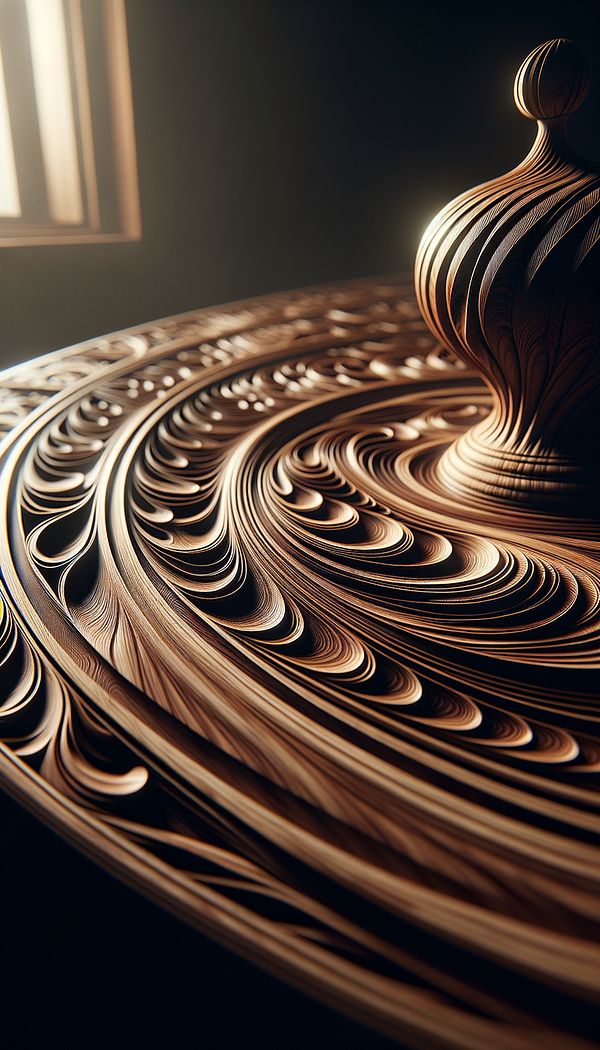What is Grain?
Grain refers to the lines or patterns seen in wood or stone, arising from their natural growth or formation processes.
Description
In the world of interior design, grain plays a crucial role in adding texture, warmth, and natural beauty to spaces. The grain in materials like wood and stone is the pattern of lines that runs through them, typically caused by their growth or formation processes. These patterns can vary widely, from straight and uniform to intricate and wavy, contributing unique characteristics to the material.
When it comes to wood, the grain is a result of the annual growth rings and the way the wood is cut. There are two main types of wood grain patterns: straight and figured. Straight grain runs parallel to the length of the wood, while figured grain has a more complex pattern, often the result of variations in growth, knots, and other irregularities. Stone grain, on the other hand, refers to the natural veining and marbling patterns caused by mineral deposits over time, offering a wide range of aesthetic options from subtle textures to dramatic, bold lines.
Understanding and leveraging grain patterns is essential in interior design. It can influence the choice of materials for furniture, flooring, and other architectural elements, affecting the overall ambiance of a space. For example, a wood with a prominent, wavy grain might be used to add visual interest and a sense of warmth to a room, while a stone with a subtle grain could provide a sleek, sophisticated look.
Usage
Grain is particularly important in choices regarding furniture selection, flooring, cabinet making, and wall finishes. In furniture design, the grain can be a focal point or a subtle background texture, influencing the piece's visual feel and durability. For flooring, the grain pattern can affect the room's perceived size and orientation, with straight grain leading the eye in a particular direction, and more intricate patterns creating a focal point.
FAQs
-
How does wood grain affect the strength of furniture?
Wood grain not only influences the appearance of furniture but also its strength and stability. The alignment of the grain can impact the furniture piece's resistance to bending and warping. Generally, furniture constructed with the grain running parallel to its longest dimension will be stronger and more stable.
-
Can the appearance of grain be altered?
Yes, the appearance of grain in both wood and stone can be enhanced or altered through various finishes and treatments. For wood, stains, oils, and varnishes can highlight the natural grain pattern, while for stone, different polishing techniques can emphasize the natural veining.
-
Is grain important for all types of interior design styles?
Grain is a versatile element that can complement a wide range of interior design styles, from rustic to modern. However, the specific type of grain and how it is used can vary depending on the style. For example, a minimalist design might favor woods with a subtle, straight grain, while a more eclectic style might showcase woods with a bold, figured grain.
Practical Application
When considering materials for your design projects, take into account not just color and durability, but also the grain. The natural patterns in wood and stone can add depth and character to a space. Look for grain that complements the style and purpose of the project, and don't be afraid to mix different grain patterns in a single space for added visual interest. Always consider the light source as well, as it can significantly affect how the grain is perceived.
-
Furniture Types599 articles
-
Decorative Techniques322 articles
-
Materials & Textiles360 articles
-
Flooring & Carpets48 articles
-
Wall Treatments & Finishes157 articles
-
BalusterA baluster is a small, vertical post that supports the handrail of a staircase, balcony, or railing.
-
RetroRetro refers to a style that draws inspiration from the past, specifically from the 1950s to the 1970s.
-
GrassclothGrasscloth is a type of wallpaper made from natural woven fibers.
-
LimewashLimewash is a type of paint made from limestone.
-
Accent WallAn accent wall is a wall that is designed to stand out from the surrounding walls in a room.
